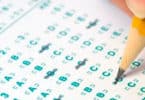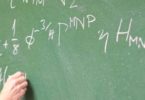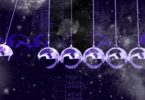Multiple Choice Questions on the Eye:
Which of the following lenses is used to minimize hypermetropia?
(a) Convex tens
(b) Concave lens
(c) Cylindrical lens
Where in the Eye do cataracts occur?
(a) Iris
(b) Cornea
(c) Retina
(d) Lens
The amount of light entering into the Eye is controlled by:
(a) iris
(b) pupil
(c) cornea
(d) optic nerves
The dark muscular diaphragm that controls the size of the pupil is known as _____
(a) cornea
(b) ciliary muscles
(c) iris
(d) crystalline lens
The one associated with accommodation in the eyes of man is
(a) ciliary muscles
(b) Depressor bulbi
(c) Levator bulbi
A person uses spectacles of power +2D. He is suffering from
(a) Short-sightedness or myopia
(b) Long-sightedness or hypermetropia
(c) Presbyopia
(d) Astigmatism
Related: Cancer questions and answers
In the human Eye, which part of the Eye receives the optical image of the object and then converts it into electrical pulses?
(a) Cornea
(b) Sclerotic
(c) Retina
The light that enters the human eye experiences most of the refraction while passing through
(a) Cornea
(b) Aqueous humor
(c) Vitrous humor
(d) Crystalline lens
The retina is most sensitive at
(a) Optic disc
(b) Periphery
(c) Macula lutea
(d) Fovea centralis
Eyes are most sensitive to green color with the wavelength of
(a) 1000A°
(b) 2500A°
(c) 5000A°
(d) statement incorrect
Eye defect due to aging is called
(a) Myopia
(b) Nypermetropia
(c) Presbyopia
(d) Astigmatism
Related: Phobia Quiz questions
The defect of vision in which a person can see distant objects clearly but nearby objects look blurred is :
(a) Myopia
(b) Astigmatism
(c) Hypermetropia
(d) Presbyopia
The human Eye forms the image of an object at its :
(a) iris
(b) Cornea
(c) Retina
(d) Pupil
Hypermetropia is a
(a) Short-side defect
(b) Long- side defect
(c) Bad vision due to old age
If the light source in front of an eye becomes bright, suddenly
(a) The focus of the lens will change
(b) Retina is bleached
(c) Vitreous humor is decondensed
(d) Pupil will contract
A person cannot see objects nearer than 75 cm from his eyes. What disease is he suffering from?
(a) Astigmatism
(b) Colour-blindness
(c) Myopia
(d) Hypermetropia
Related: blood knowledge questions and answers
The human Eye has a lens of
(a) Fixed focal length
(b) Variable focal length
(c) Variable refractive index
(d) Glass
A human eye can focus on objects at different distances by adjusting the focal length of the eye lens. This is due to :
(a) Far-Sightedness
(b) Near-sightedness
(c) Accommodation
(d) Persistence of vision
Color blindness is also known as
(a) Trachoma
(b) Astigmatism
(c) Daltonism
(d) Myopia
The iris takes its name from the Greek word meaning what?
(a) Delicate
(b) Opening
(c) Rainbow
(d) Blue
How should people wearing spectacles work with a microscope?
(a) They cannot use the microscope at all
(b) They should keep on wearing their spectacles
(c) They should take off their spectacles
(d) (b) and (c) are both ways
Related: multiple choice questions on Human Teeth
If the distance from the far point for a myopic patient is doubled, the focal length of the lens required to cure it will become
(a) Half
(b) Double
(c) The same but a convex lens
(d) The same but a concave lens
Which is the human Eye’s central part that causes maximum light refraction?
(a) Lens
(b) Conjunctiva
(c) Cornea
(d) Aqueous humor
Which of the following helps the Eye to adjust the focal length of the eye lens :
(a) Cornea
(b) Conjunctiva
(c) Ciliary body
(d) Iris
A person is suffering from the defect astigmatism. Its main reason is
(a) The distance of the eye lens from the retina is increased
(b) The distance of the eye lens from the retina is decreased
(c) The cornea is not spherical
(d) Power of accommodation of the Eye is decreased
Which part of the brain is involved in the contraction of pupils in response to bright light?
(a) Inferior colliculus
(b) Superior colliculus
(c) Hypothalamus
(d) Thalamus
Related: quiz questions about the human body
When the eye lens’s power increases, the vision defect is produced. The defect is known as
(a) Shortsightedness
(b) Longsightedness
(c) Colorblindness
Presbyopia is an eye defect in which
(a) The eyeball becomes short
(b) The lens becomes opaque
(c) Loss in elasticity of lens occurs
(d) Loss of contractility of ciliary muscle occurs
The image formed on the retina of a human eye is
(a) Real and upright
(b) Real and inverted
(c) Imaginary and upright
(d) Imaginary and inverted
Select the correct one regarding hyperopia.
(a) An image of the object is formed between the lens and retina due to the shorter anteroposterior axis of the eyeball.
(b) The image of the object is formed behind the retina due to the longer anteroposterior axis of the eyeball.
(c) Images are formed behind the retina owing to the shorter anteroposterior axis of the eyeball.
(d) An image is formed in front of the retina owing to the longer anteroposterior axis of the eyeball.
The circular part in the center of the retina is called
(a) Blindspot
(b) Yellow spot
(c) Red spot
Related: microscope and telescope MCQs
In a color-blind person, the condition of protanopia arises when the
(a) Red cones are absent, and the red color is not perceptible
(b) Green cones are absent, and the green objects appear red
(c) Red cones are absent, and red object appear green
(d) Cones cells lack any color pigments.
If there had been one Eye of the man, then
(a) The image of the object would have been inverted
(b) Visible region would have decreased
(c) The image would have not been seen three dimensional
(d) (b) and (c) both
The accommodation of a routine eye is from :
(a) 0 to 25 cm
(b) Zero to infinite
(c) 25 cm infinity
__ is a serious condition that can lead to blindness.
(a) Somatic mutation
(b) Heart disease
(c) Glaucoma
(d) Osteoporosis
Which of the following parts of the Eye are the most color-sensitive?
(a) the rods
(b) the cones
(c) the iris
(d) the retina
Related: quiz about liver
A defective eye cannot see closed objects clearly because their image is formed:
(a) On the eye lens
(b) Between eye lens and retina
(c) On the retina
(d) Beyond retina
In the human Eye, the focus is done by
(a) To and fro movement of the eye lens
(b) To and fro movement of the retina
(c) Change in the convexity of the lens surface
(d) Change in the refractive index of the eye fluids
The human Eye has a lens which has a
(a) Soft portion at its center
(b) Hard surface
(c) Varying refractive index
(d) Constant refractive index
Myopia is due to
(a) Elongation of the eyeball
(b) Irregular change in focal length
(c) Shortening of eyeballs
(d) Older age
Related: friction quiz with answers
The retina of the Eye acts like __ of a camera
(a) Shutter
(b) Film
(c) Lens
The ability of the Eye to see objects at all distances is called
(a) Binocular vision
(b) Myopia
(c) Hypermetropia
(d) Accommodation
The sensation of vision in the retina is carried to the brain by
(a) Ciliary muscles
(b) Blindspot
(c) Cylindrical lens
(d) Optic nerve
Image is formed for the short-sighted person at
(a) Retina
(b) Before retina
(c) Behind the retina
(d) Image is not formed at all






